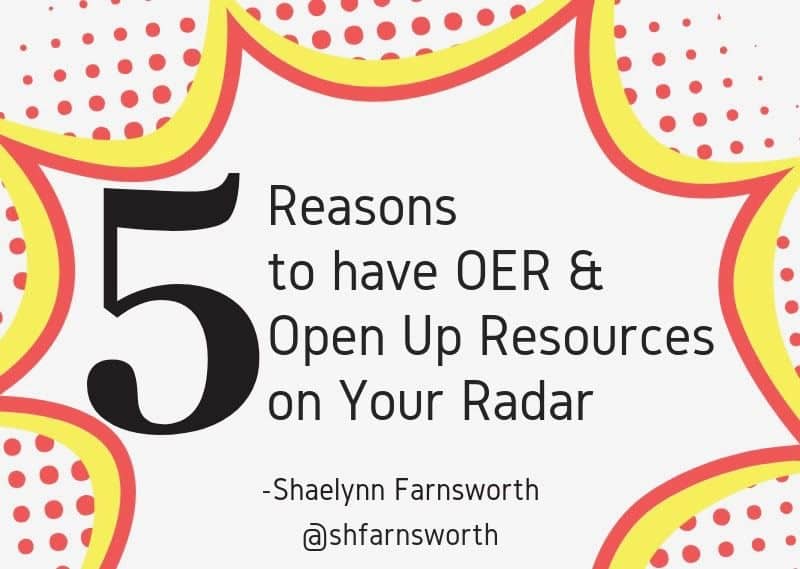
Have OER and Open Up Resources on Your Radar
Guest Blog post by Shaelynn Farnsworth
OER or Open Education Resources has been around for over 20 years. Previously, OER was more prominent in higher-ed, but awareness of OER continues to grow across the nation in PreK-12 settings. It was during an EdCamp four years ago when I first learned of the movement. Since that time, I have continued to learn about OER and bring awareness to the growing number of PreK-12 resources available for use. In fact, about 2 months ago, I left the public education sector to work for the non-profit, Open Up Resources. This new “Edventure” allows me to broaden my skill set, utilize and blend my passion areas, and advocate for all students and educators.
So what is OER and why does it matter?
Simply put, OER is teaching and learning resources/materials that are in the public domain and are openly licensed. Which means you can use, adapt, change, and redistribute materials based on need. And why does it matter, well… I’ll give you my top 5!
Free, high-quality curricula – For many years, OER mainly consisted of lessons, units, or ideas curated in one location. Now, educators and districts are able to find and use a complete curriculum that is vetted, aligned, based on best practices, and of high-quality. And the best part – completely FREE.
Equity – No matter where a student lives or which district a teacher works in, everyone should have equal access to excellent materials. Along with access, the ability to revise and repurpose OER allows teachers to differentiate based on student need, include relevant and engaging topics and concepts, and include diverse voices in the material students access. It is important to recognize and include all voices and identities in learning opportunities.
Social Learning – OER sparks a culture of sharing and learning between educators which includes crossing district and digital lines. The same is true in my role as the ELA Community Manager. I help to foster virtual learning among educators across the nation through FB Groups, the #OpenUpELA Twitter Chat, as well as live webinars. In June, we are also adding a conference, HIVE to support the face-to-face needs of districts and teachers. This professional learning increases educator collaboration and sharing of what works in their classroom.
Multiple Modes of Access – One piece of misinformation about OER that I commonly address is the mode in which material is available. OER does not = only digital and online materials. In fact, both our Math and ELA curricula are in print and digital forms. Access to technology or a 1 to 1 classroom is not a requirement of OER.
Non-Profit – Finally, and this is a personal reason, working for a non-profit, OER company means we are mission-driven instead of profit-focused. Equity, education, and social justice drives decisions and actions made by all teammates. This emphasis makes doing the hard work worth it!
Want to learn more and connect with other educators using OER? Join us each Thursday night at 8 PM EST for the #OpenUpELA Twitter Chat or reach out to me at @shfarnsworth
<script async="" src="//pagead2.googlesyndication.com/pagead/js/adsbygoogle.js"></script>
<ins class="adsbygoogle" style="display:block; text-align:center;" data-ad-layout="in-article" data-ad-format="fluid" data-ad-client="ca-pub-4474023805431647" data-ad-slot="2648255041"></ins>
<script>
(adsbygoogle = window.adsbygoogle || []).push({});
</script>








